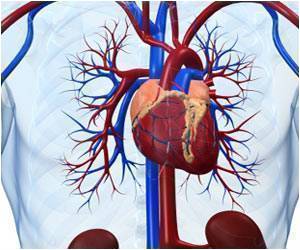
This finding by the researchers at Case Western Reserve University holds a big bang for cancer patients. Preliminary tests show an anti-cancer drug loosely attached to gold nanoparticles starts accumulating deep inside tumors within minutes of injection and The same drug injected alone takes two days to gather and attacks the tumor from the surface a far less effective route.
The work, titled "Deep Penetration of a PDT Drug into Tumors by Noncovalent Drug-Gold Nanoparticle Conjugates," is published today in the online edition of the Journal of the American Chemical Society.
Speeding anti-cancer drugs directly into tumors enables patients to receive lower doses of the toxic chemicals, thereby saving healthy tissue from damage and other harsh side effects suffered in traditional chemotherapy.
"We hope to lower the dosage by at least a factor of 10," said Clemens Burda, a professor of chemistry at Case Western Reserve and the senior author of the paper.
The key to success? The scientists tied an anti-cancer drug to golden missiles using a weak chemical interaction called a noncovalent bond. In molecule construction, a covalent bond is a heavy rope lashed and knotted; a noncovalent bond is a shoestring tied in a bow.
"Very often, additions to chemical systems change properties of the components of the system," Burda said. Attempts by his and other research groups to use covalent bonds for drug delivery have resulted in such complications and less than hoped-for results.
Advertisement
Burda's group sought to simplify the process by using materials that have well-known properties.
Advertisement
A coat of polyethylene glycol links tightly to the gold while providing cargo space to attach other materials.
The coated gold provides an environment to physically prevent activation of the photodynamic therapy drug silicon phthalocyanine, preventing unintended toxic exposures to healthy tissues.
The loosely-held drug is released from the nanoparticle through the attraction of the drug to the lipid membrane of cancer cells. Laser light switches on the freed silicon phthalocyanine, which breaks down and kills cancer cells, shrinking the tumor.
After delivering the drug, the nanoparticles pass through the kidneys and clear the body within a week.
Source-Eurekalert











